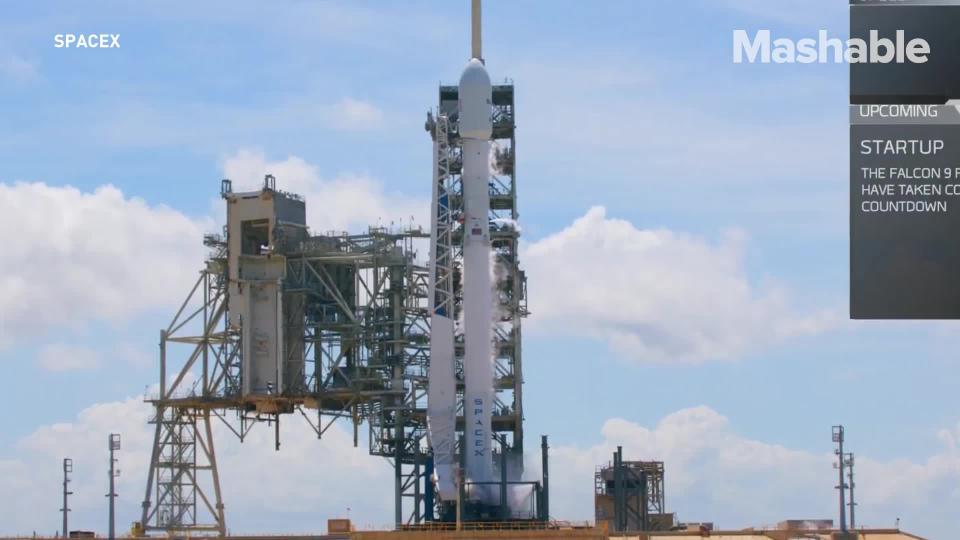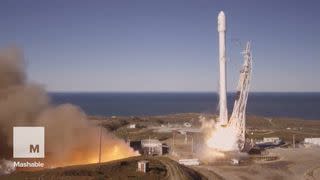SpaceX’s second launch-and-land of a used rocket was a nail-biter


Oh, SpaceX. You certainly keep your promises.
On Friday at 3:10 p.m. ET, SpaceX successfully launched a reused Falcon 9 rocket loaded down with BulgariaSat-1 — the small European nation's first geostationary communications satellite — to orbit.
SEE ALSO: Watch mesmerizing footage of SpaceX's historic rocket landing
About eight minutes later, the first stage of the rocket came in for a challenging landing on a drone ship floating in the Atlantic Ocean. This marks the twelfth time SpaceX has performed one of these reusable rocket landings, and was, according to the company, the most challenging of them so far.
But that's not all.
Rocket is extra toasty and hit the deck hard (used almost all of the emergency crush core), but otherwise good
— Elon Musk (@elonmusk) June 23, 2017
This particular rocket booster is a special one. Friday marks the second time this particular rocket stage has been to space and made it back to Earth. The booster first flew a payload to orbit in January, and SpaceX refurbished it in time for this flight.
This kind of reusability is exactly what SpaceX needs to make its dream of cheap, readily available trips to space come true.
According to SpaceX founder and CEO Elon Musk, the Falcon 9 rocket booster was subject to the most punishing reentry into Earth's atmosphere of any of SpaceX's boosters during prior landing attempts, including the failed ones.
Prior to the launch, he warned that it might not make it back for landing.
Falcon 9 will experience its highest ever reentry force and heat in today's launch. Good chance rocket booster doesn't make it back.
— Elon Musk (@elonmusk) June 23, 2017
SpaceX seems to have upped their game since the last re-flight of a previously-used rocket in March 2017.
It took about 11 months from landing to relaunch of that booster, but the turnaround was much faster on the most recent launch, with only about six months in between launches.
Eventually SpaceX plans to make that turnaround even quicker, launching and landing reusable rocket stages with very little downtime in between.
But for now, this is just the start of the company's grand plan to reinvent spaceflight as we know it.
Instead of simply using a rocket once and allowing it to burn up in the atmosphere, SpaceX has started to bring back these expensive rocket pieces to slash the cost of flying to space through reuse.
That kind of reusability, the company says, will drive down the cost of spaceflight, making space more accessible for everyone who wants to send payloads, or even people, to orbit.
Proving that it can recycle more than just booster rockets, on June 3, the company successfully launched a reused Dragon capsule loaded with supplies to the International Space Station.
SpaceX is planning a double-header in the next 48 hours.
The company is not taking a rest for the weekend, though. It's planning to launch and land another rocket from Vandenberg Air Force Base in California on Sunday.
The first stage of that Falcon 9 rocket is also expected to come in for a landing on a different drone ship in the Pacific Ocean after launch.
SpaceX makes landings back on solid ground as well, but sometimes the mission profile requires a landing at sea. If a payload is particularly heavy or going to a high orbit it's easier and more fuel efficient to land a booster on a drone ship instead of on land.
WATCH: SpaceX did something amazing over the weekend


